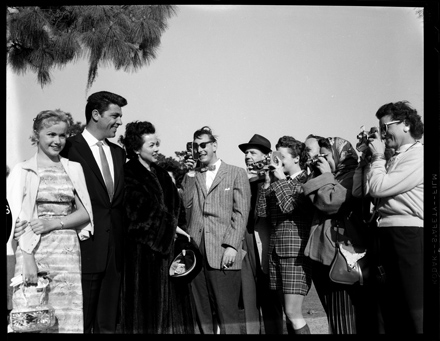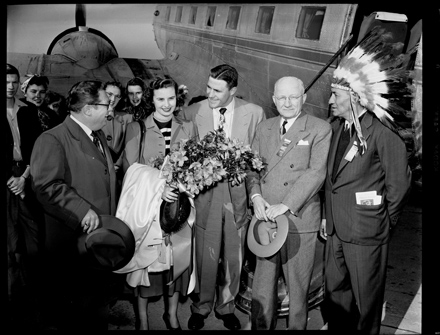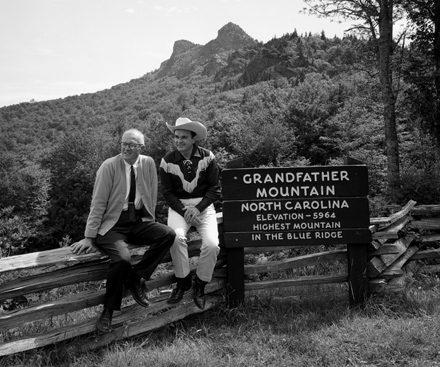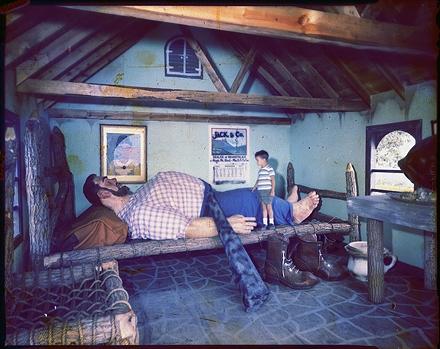A couple of weeks ago, I went to spend a few leisurely days with my family at Sunset Beach, NC. The idea, of course, was to get away from it all—little did I realize that when one’s job centers around Hugh Morton, it’s impossible to drive on North Carolina’s highways without being constantly reminded of work! Highway 17 near Wilmington is especially bad. Nearly every road sign I saw reminded me of Morton—Castle Hayne, St. Helena, Holden Beach, Orton Plantation, the State Ports, and of course the USS North Carolina, which we drove right by (twice!) . . .
View Larger Map
The image below shows (I believe) Morton’s wife Julia and a little girl (maybe their daughter Catherine) in a field of daffodils at Castle Haynes (over time, it seems, the “S” has been dropped from the place name). Morton took many a portrait in these highly photogenic flower fields.
![Julia and Catherine [?] Morton in daffodil field at Castle Hayne[s], NC, circa early 1960s](https://blogs.lib.unc.edu/morton/wp-content/uploads/sites/7/2008/05/castlehaynes.jpg)
The story of Castle Hayne(s) and St. Helena is a fascinating one: Hugh MacRae, Morton’s grandfather, founded these two experimental colonies around the turn of the 20th century, with the goal of attracting European immigrants to introduce their systems of intensive agriculture to the Southeast. In a March 1934 article from The State magazine, MacRae is quoted as saying, “I feel sure that we have got to rebuild our economic structure beginning at the base, which means a reshaping of rural life.”

Farm families from countries including Greece, Russia, Italy, Holland, Germany, Poland, and Hungary transplanted themselves to New Hanover and Pender counties to begin new lives, and many proved highly successful. From the March 10, 1934 The State article: “While the cancerous depression was eating the core out of farming financially and otherwise all over the United States, these colonies were teeming with prosperity in comparison.” (Note: anyone interested in learning more about MacRae’s experiment and similar settlements should track down the following article: “A Reconnaissance of Some Cultural-Agricultural Islands in the South,” by Walter M. Kollmorgen, Economic Geography Vol. 17, No. 4, Oct. 1941, pp. 409-430.)
While the Hugh Morton image below is labeled simply “Dutch Girls,” I feel certain it was taken at Castle Hayne, sometime during the 1940s:
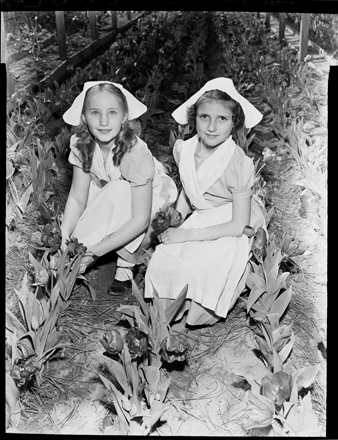
I’m less certain about the following Morton image, which is one of a batch of negatives I found in an envelope labeled “Estonians.” It shows what I assume is a group of immigrants or visitors from Estonia, taken probably on the Wilmington waterfront during the 1940s. Were these people coming to settle at MacRae’s colonies? I have no idea. (If it helps anyone with identification, a building in the background reads either “Maffitt…” or “Haffitt…”).
![“Estonians,” Wilmington, NC waterfront [?], circa 1940s](https://blogs.lib.unc.edu/morton/wp-content/uploads/sites/7/2008/05/p081_ntbf3_000141_10.jpg)
Later articles from The State (from the 8/11/1945 and 11/16/1957 issues), reinforce the notion that this particular experiment proved beneficial to the region’s economy. I don’t know much about what’s going on in St. Helena and Castle Hayne these days, other than what I learned from a recent article in the Wilmington Star News about the possible closure of the Castle Hayne Horticultural Crops Research Station. Can anyone help bring us up to date?
You see how easy it is to get caught up in just one of the roadside locations along Highway 17. Perhaps I’ll explore others in future posts.
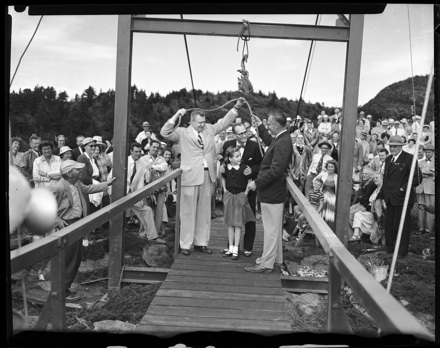


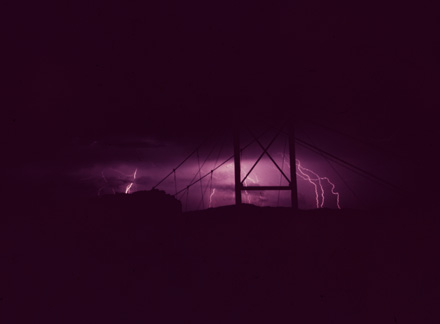
![Julia and Catherine [?] Morton in daffodil field at Castle Hayne[s], NC, circa early 1960s](https://blogs.lib.unc.edu/morton/wp-content/uploads/sites/7/2008/05/castlehaynes.jpg)


![“Estonians,” Wilmington, NC waterfront [?], circa 1940s](https://blogs.lib.unc.edu/morton/wp-content/uploads/sites/7/2008/05/p081_ntbf3_000141_10.jpg)
 Wilmington’s 61st annual North Carolina
Wilmington’s 61st annual North Carolina 